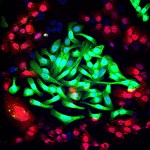Drug design
What is a breakthrough in cancer research? It is a new piece of a puzzle made up of a million pieces. It may, however, be a piece that allows a picture to start emerging – one that lets us see the shape of the next piece needed to fill in more of the puzzle, or start making changes to rearrange the picture from one of cancerous growth to one of normalcy.
The Institute’s Prof. Yosef Yarden’s recent research provides a vital piece for the puzzle of resistance – how cancer cells, especially those in recurring cancers, stop responding to chemotherapy. His answer is specific to a kind of lung…
Since mental health problems are estimated to affect some 10% of the world’s population, it stands to reason that if you don’t suffer from depression, anxiety or bipolar disorder yourself, you are probably close to someone who does. So you might be pleased to read about a new finding that could eventually lead to a whole new approach to treating this group of common mood disorders.
The finding is that a tiny scrap of RNA – a microRNA that works in the brain – acts as a sort of mood regulator. It works something like the needle in a steam valve. Mice that had high levels of this particular…
Often, simply identifying the structure of a potential drug target protein and designing a molecule to block it are not enough. Just ask Prof. Irit Sagi, a chemist turned biology researcher, who recently developed a clever technique for directing the body to design its own protein-blocking molecules.
Sagi studies an enzyme called matrix metalloproteinase 9 (MMP-9). This protein, along with other members of the MMP family, cleaves straight through the support tissues in the body - collagen and the extracellular matrix that gives organs and tissues structure. This, of course is crucial for…
